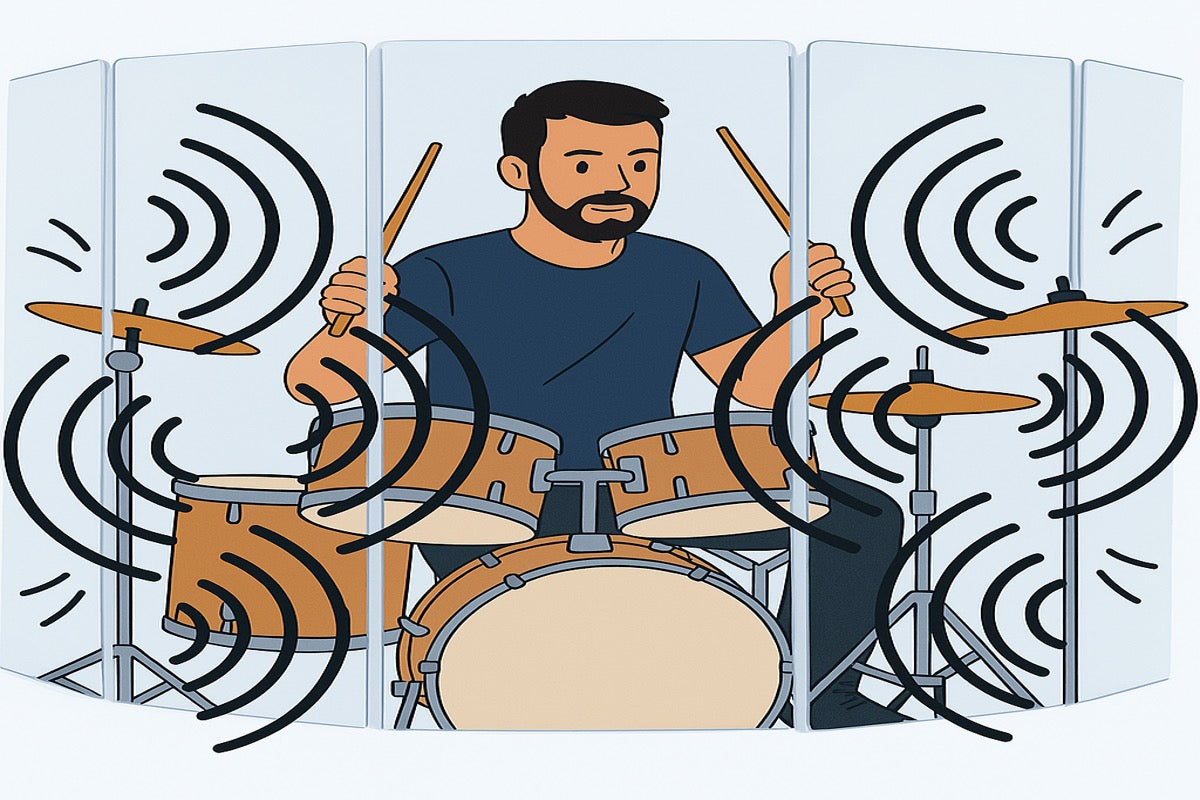Drummers are the backbone of any band, bringing energy, rhythm, and drive to the music. But let’s be honest—drums can be loud. Whether you’re playing in a small venue, a church, a recording studio, or even just jamming at home, controlling drum volume can be a challenge. That’s where drum shields come in. But do drum shields really work? And why do so many musicians and sound engineers swear by them?
In this post, we’ll break down the top five reasons people use drum shields and whether they are worth the investment.
What is a Drum Shield?
A drum shield, also known as a drum screen or drum cage, is a clear acrylic or plexiglass barrier that surrounds a drum kit to help control its sound. Some drum shields are standalone panels, while others include a roof and additional sound-absorbing materials to provide even greater sound isolation.
Many drummers turn to high-quality drum shield options like those from ClearSonic, a leading manufacturer of professional drum shields and isolation solutions.
Top 5 Reasons People Use Drum Shields
1. Volume Control for Live Performances
In small venues, drum volume can overpower vocals, guitars, and other instruments. Drum shields help reduce the bleed of sound into microphones, allowing for better mixing and balance. This is especially useful in churches, where maintaining a controlled, clear sound is crucial for both musicians and the congregation.
Check out ClearSonic’s A5-5 Drum Shield for an effective solution for live settings.
2. Improved Sound Isolation for Recording
Recording drums can be tricky—microphones pick up everything, including unwanted reflections and excessive reverb. A drum shield helps isolate the sound, resulting in cleaner recordings with more controlled dynamics. For even better isolation, pairing a drum shield with sound-absorbing panels like the ClearSonic Sorber Panels can significantly improve the recording environment.
3. Better Stage Monitoring
When drum volume is too high on stage, it can make it difficult for other band members to hear their own instruments and vocals. Drum shields help control stage noise, making it easier for musicians to focus on their performance. Many drummers also use ClearSonic Lid Systems to further control sound in live and studio environments.
4. Noise Reduction for Rehearsal Spaces
Practicing at full volume can be a problem in shared spaces, whether at home, in a rehearsal studio, or in a venue. Drum shields help contain and redirect sound, making practice sessions more manageable for both the drummer and anyone nearby. If you need a compact solution, ClearSonic’s IsoPacs offer full or partial enclosures for greater sound control.
5. Protecting Microphone Mix in Houses of Worship
Many churches and houses of worship use drum shields to maintain a balanced sound mix. Without a shield, drum sounds can spill into vocal and instrument microphones, creating an overwhelming and muddy mix. Drum enclosures with additional absorption panels, such as the ClearSonic MegaPac, offer maximum sound control in large worship settings.
Do Drum Shields Really Work?
Yes! While drum shields don’t completely eliminate drum noise, they significantly reduce volume directly behind the acrylic and help control sound in various settings. Whether you’re performing live, recording, rehearsing, or leading worship, investing in a high-quality drum shield can make a big difference in sound management.
For more information on drum shields and sound isolation solutions, visit ClearSonic.com and explore their full range of products.
Have you used a drum shield before? Let us know your experience in the comments!



Share:
Amp Shields: The Ultimate Solution for Stage and Studio Sound Control